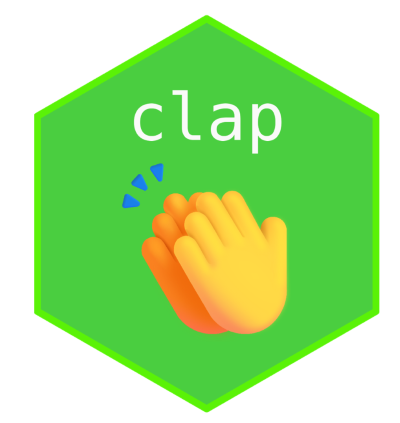Peer-Reviewed Publications
Early Identification of Deforestation using Anomaly Detection
Authors: N. Wijesinghe, R. Perera, N. Sellahewa, P. D. Talagala
Published in: 2023 8th International Conference on Information Technology Research (ICITR), Colombo, Sri Lanka, 2023, pp. 1-6
DOI: 10.1109/ICITR61062.2023.10382919
Research involving anomaly detection in image streams has seen growth through the years, given the proliferation of high-quality image data in various applications. One such application that is in urgent need of attention is deforestation. Detecting anomalies in this context, however, remains challenging due to the irregular and low-probability nature of deforestation events.
Keywords: Deep learning, Deforestation, Closed box, Feature extraction, Anomaly detection
Cross-vit: Cross-attention vision transformer for image duplicate detection
Authors: M. D. N. Chandrasiri and P. D. Talagala
Published in: 2023 8th International Conference on Information Technology Research (ICITR), Colombo, Sri Lanka, 2023, pp. 1-6
DOI: 10.1109/ICITR61062.2023.10382916
Research involving anomaly detection in image streams has seen growth through the years, given the proliferation of high-quality image data in various applications. One such application that is in urgent need of attention is deforestation. Detecting anomalies in this context, however, remains challenging due to the irregular and low-probability nature of deforestation events.
Keywords: Duplicate Image Detection, Vision Transformers, Attention
From Crisis to Opportunity: A Google Trends Analysis of Global Interest in Distance Education Tools During and Post the COVID-19 Pandemic
Authors: Priyanga Dilini Talagala, Thiyanga S. Talagala
Published in: 6th International Conference on Advanced Research Methods and Analytics (CARMA 2024), Valencia, 26-28 June 2024
DOI: 10.4995/CARMA2024.2024.17804
This study investigated the impact of COVID-19 on global attention towards different distance education tools. We used Google Trend search queries as a proxy to quantify the popularity and public interest in different distance education solutions under 11 subsegments, which include collaboration platforms, online proctoring, and resources for psychosocial support.
Keywords: Online Learning; Online Teaching; Distance Education Solutions; COVID-19 Pandemic; Google Trend Search Queries; Psychosocial Support in Education
Generalized Meta Framework for Forecasting
Authors: Theepana Govintharajah, Pavadaran Pathmaranjan, Gowsigan Kanagalingam, Priyanga Dilini Talagala
Published in: 2024 9th International Conference on Information Technology Research (ICITR), Colombo, Sri Lanka, 05-06 December 2024
DOI: 10.1109/ICITR64794.2024.10857715
Forecasting tabular time series data has become a challenging task as the time series data has its own unique patterns, and therefore identifying the most suitable modeling approach for a given dataset requires additional investigations and expert knowledge.
Keywords: Time Series Forecasting, Meta-Learning, Ensemble Modeling, Generative Models, Deep Learning, Machine Learning
Early Disease Outbreak Detection in Spatio-Temporal Data Using Predictive Modeling and Extreme Value Theory
Authors: E.G.M.A. Senevirathne, Priyanga D. Talagala
Published in: 2024 9th International Conference on Information Technology Research (ICITR), Colombo, Sri Lanka, 05-06 December 2024
DOI: 10.1109/ICITR64794.2024.10857720
Early detection of outbreaks is crucial for reducing their impact on public health. Static manual thresholds have been used for traditional detection methods, which fail to capture extreme events in dynamic transmission patterns.
Keywords: Disease Outbreak Detection, Spatio-Temporal Data, Predictive Modeling, Extreme Value Theory, Public Health
Enhancing Demand Forecasting in Food Manufacturing: Hierarchical Analysis of Aggregated and Individual Models
Authors: Achala Hasini Perera, Priyanga Dilini Talagala, H. Niles Perera, Amila Thibbotuwawa
Published in: 2024 9th International Conference on Information Technology Research (ICITR), Colombo, Sri Lanka, 05-06 December 2024
DOI: 10.1109/ICITR64794.2024.10857772
This study focuses on production planning in the food manufacturing sector using hierarchical forecasting. The selected case for the focal study represents food products with a common main ingredient used in manufacturing.
Keywords: Demand Forecasting, Food Manufacturing, Hierarchical Forecasting, Machine Learning, Time Series, ARIMA, ETS, Prophet, XGBoost, MinT
Improving Class Imbalance in the Classification of Multi-Dimensional Data: Interpretable Model Design and Evaluation
Authors: Gayathri Sivakumar, Chambavy Balasundaram, Vithursan Thevendran, Priyanga Dilini Talagala
Published in: 2024 9th International Conference on Information Technology Research (ICITR), Colombo, Sri Lanka, 05-06 December 2024
DOI: 10.1109/ICITR64794.2024.10857748
This study presents a hybrid approach that combines deep learning techniques with conventional machine learning techniques to address the class imbalance in the classification of multi-dimensional data.
Keywords: Class Imbalance, Multi-Dimensional Data, SHAP, CGAN, SSCGAN, VAE, Explainable AI, Machine Learning, Deep Learning
Working Papers & Preprints
Chandeepa Pathirana and P. D. Talagala, “DHybrid Feature-Hash Module For Image Duplicate Detection,” 2025 10th International Conference on Information Technology Research (ICITR), Colombo, Sri Lanka, 2025, (Under Review)
M.H.D.B Gajakum, M. D. N. Chandrasiri and P. D. Talagala, “Dynamic Cluster Specific Ensembles with Explainable AI for Flood Hazard Prediction,” 2025 10th International Conference on Information Technology Research (ICITR), Colombo, Sri Lanka, 2025, (Under Review)
Wijesinghe, N., Perera, R., Sellahewa, N., & Talagala, P. D. (2024). Anomaly Detection in Image Streams Using Explainable AI (Working Paper). Faculty of Information Technology, University of Moratuwa, Sri Lanka.
Software & Tools

Talagala, P. D. (2024). clap: Detecting class overlapping regions in multidimensional data (R package version 0.1.0). https://doi.org/10.32614/CRAN.package.clap
You can install the clap R package in R using either CRAN or GitHub:
# Install from CRAN
install.packages("clap")
# Or install the development version from GitHub
# install.packages("devtools") # if not already installed
devtools::install_github("pridiltal/clap")P. D. Talagala, R. J. Hyndman, and G. Romano, “AnomalyDetection: CRAN Task View: Anomaly Detection,” GitHub repository, version 2025-10-21, accessed Nov. 15, 2025. [Online]. Available: https://github.com/cran-task-views/AnomalyDetection/
You can install the AnomalyDetection CRAN Task View in R with a single line using the ctv R package:
# Install the ctv package if you don't have it
install.packages("ctv")
# Install the AnomalyDetection Task View
install.views("AnomalyDetection")